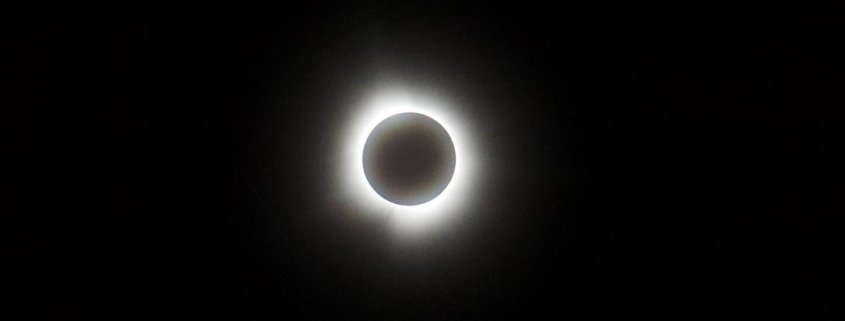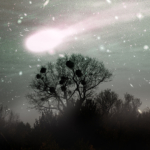Chaplain’s Corner: CLXXIV
“Three Minutes of Wonder”
Today, April 8, 2024, millions of Americans will have the chance to see something they may never see again. The Solar Eclipse—the moon, passing between the Earth and the Sun, will gradually obscure the sun’s brilliant surface. The “transit” takes about two-and-a-half hours, and the shadow it casts-racing along at about 2,000 mph-will progress from southwest Texas to New England.
While much of the country will experience a partial solar eclipse, large metro areas like Dallas. Indianapolis, and Cleveland-not to mention hundreds of smaller communities-are in the so-called “Zone of Totality.” That’s a 67 mile wide path where the light of the sun will be completely obscured for about three minutes. Cloud cover will no doubt compromise the show in some localities. But something like 31.5 million people will at least experience sudden darkness in the middle of the day, making this the most observed solar eclipse in human history.
Multitudes have made plans to travel to viewing spots within the zone, which means this may be the only time in history in which a huge number of people have said, “Hey, let’s go to Muncie, Indiana.” Why is everyone so worked up about wearing “solar-safe” viewing glasses? There is nothing-absolutely nothing that makes an eclipse unusually dangerous with regard to human eyesight. It’s just that the sun is ALWAYS dangerous, day in and day out. But people rarely find it even remotely interesting to stare at the disk of our nearest star.
When we do fix our unfiltered gaze on the sun, bad things happen. Sunlight is actually a stream of photons, byproducts of the nuclear fusion that is happening deep within the sun’s
core. Those photons have the power to overwhelm the chemical receptors on our retinas, the delicate tissue at the back of our eyeballs responsible for the phenomenon of sight.
Sir Isaac Newton, the brilliant 17th century scientist, once stared for a few minutes at the reflection of the sun in a mirror. The result was temporary blindness. Even after hiding for three days in a darkened room, Newton couldn’t dispel the bright spot that seemed to have burned itself into his consciousness. If he had stared just a few moments longer he would have lost his vision permanently-proof that even geniuses promoted by simple curiosity, can make unfortunate decisions.
What is the big thing about totality? First it’s very cool. Literally. As the sun’s light is completely blocked by the presence of the moon, air temperatures can drop anywhere from 5 to 15 degrees. Brief thunderstorms can even erupt. Living things often respond dramatically. Birds and insects may grow quiet as if it were night. Bees return to their hives. Dogs have been observed cowering.
A total eclipse will almost certainly generate a deeply felt sense of awe-especially as we contemplate the extraordinary circumstances that make it possible. The Earth, it turns out, is the only planet-the only place in our solar system from which one can view this phenomenon. We know of 292 other moons in our solar system orbiting the other planets, but none of them is configured in such a way that the total surface of the sun is perfectly covered, thereby highlighting the sun’s corona. The sun is 400 times larger than our moon, but it’s also 400 times further away. That makes it the perfect size at least from where we are standing to generate a perfect eclipse.
Why does this matter? Astronomer Guillermo Gonzalez notes, “Perfect solar eclipses have resulted in important scientific discoveries that would have been impossible elsewhere, where eclipses don’t happen.”
All this focus on the power of light can also steer us back to I John 1:5, which declares: “God is light, and in Him is no darkness at all.” In John 1:18 we read, “No one has ever seen God.” It is easy to see why no human being can ever look at God’s essence with unfiltered eyesight. We simply don’t have the physical, mental or spiritual apparatus to survive such an experience.
We can’t gaze directly at God. But God has made it possible to see Him-to see who He really is-by fixing our attention on His Son. That’s an experience more transforming than an endless number of eclipses.
May today’s spectacle in the sky open our eyes to that truth as never before.
Faithfully,
Ron Naylor, Chaplain




